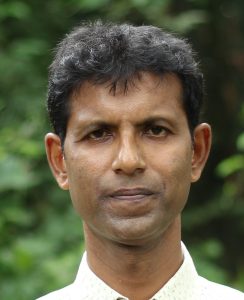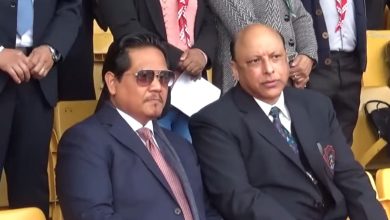Influence of Sanskrit & contemporary dramas on Sankardev’s works

By Arup Saikia
 Assam is a land of multi-ethnic, multi-racial and multi-lingual people, inhabiting here from time immemorial and enriching the local culture. In the medieval era, Srimanta Sankardev emerged as a social reformer and chose drama as the medium to reach out to people.
Assam is a land of multi-ethnic, multi-racial and multi-lingual people, inhabiting here from time immemorial and enriching the local culture. In the medieval era, Srimanta Sankardev emerged as a social reformer and chose drama as the medium to reach out to people.
The Vaishnavite preacher and artist is the father of Assamese drama. Although the plays, which were called ankiya naat, were written for social reformation, those highly contributed to Assamese literature. He understood that audio-visual would be the best medium to teach illiterate people. He thought of Bhakti movement through Ankiya Bhaona or drama.
At the age of 19, Sankardev staged Chihnayatra (drama of symbol or drawing) in Tembuwani near Borduwa. This drama of drawing started a new chapter in Assamese drama and came to be recognised across the country and around the world for its precious treasure and uniqueness.
The word ankiya is derived from the Sanskrit word anka, which means ‘act’. But neither Sankardev nor Madhavdev, another great saint of the time, used the term anka in their drama. Moreover, the term bhaona, Assamese traditional drama, was not used during the saints’ lifetime.
The theme of Ankiya naat was mostly from the Bhagawat Puran. But for dramatic presentation, Sankardev utilised his artistic skill by imitating traditional Assamese, Indian and Sanskrit dramas.
Sankardeva was much influenced by traditional Assamese folk culture prevalent since the first century. These partially theatre-like folk culture was obviously part of pan-Indian pre-theatrical movement. The following are popular musical plays in Assam before Sankardev:
Kushan gaan: A Ramayana-based folk drama that originated in the Koch kingdom traversing north Bengal, west Assam and undivided Rangpur district of Bangladesh.
Bhari gaan: This is also one kind of musical drama narrating episodes from the Ramayana and the Mahabharata with some dramatic presentation, practised by pati-rabha of the Rabha community in Kamrup and Goalpara districts.
Pala gaan: It is a performing art form of Assam, also found in West Bengal and Orissa.
Ojapali: It is one of the oldest art forms of Assam found in Kamata and Darrangi kingdoms and was patronised by King Dharmanayarana. The show led by one person called oza and joined by other few called pali. Continuous playing of cymbal by pali became quintessential orchestra in Ankiya Naat. Ozapali traces its lineage to kathakata tradition of West Bengal that has much similarity with ankiya naat.
Puppet dance: Known as putala nach in Assam, it is found in the whole of the Indian subcontinent. The string holder of a puppet dance Sankardev to invent the character of Sutradhara, which literally means string holder.
Dhuliya/Khuliya bhaona: This folk entertainment was popular in Darrang and Kamrup districts.
All the above forms of drama maintained a sequence during performance — ankiya orchestra, prastavana (preamble), prorochona (persuasion), mangalcharan (praise of deity), pala (main story). Dhemali or purbaranga performed in Ankiya have much similarity with that of dhuliya performance of Darrang. On the other hand, in Sanskrit drama, a different kind of purbaranga is available — pratyahara (withdrawal, bringing of musical instruments), avatarana (placing of singers), arambha (beginning of the rehearsal), asravana (tuning of instruments), recitation of benediction by Sutradhara.
It is worthwhile to mention that unlike Sanskrit drama, Sutradhara remains on stage throughout the play in ankiya. Therefore, Sutradhara of ankiya is similar to that of ozapali or puppet dance.
Prior to Sankardev, no written drama was available in Assam. So, it’s natural for all playwrights of India to be influenced by Sanskrit drama. Ankiya naat that begins with nandi sloka (verse) is originally a product of Sanskrit drama. Sankardev uses two nandi slokas in his drama. Moreover, for prastavana, prorochona and muktimangalam bhatima (panegyric), ankiya naat is indebted to Sanskrit drama.
Contemporary influence
The influence of contemporary India drama in ankiya naat cannot be ignored. Yakshagana of Karnataka, Kathakali of Kerala, Bhagwat mela of Tanjore, bhavai of Gujarat and Ramleela of north India influenced Sankardev because during his two pilgrimages, he came in close contact with Indian scholars.
Glimpse of ankiya naat: Only six written dramas, excluding Chihnayatra, of Sankardev are found. These are Patni Prasad, Kaliya Daman, Keligopal, Rukmini Horon, Parijat Horon and Ram Vijay. It is not known whether Patni Prasad or Kaliya Daman was written first during his stay in Upper Assam and the rest were written in Kamrup and Coch Behar. Ram Vijay is his last drama.
Patni Prasad (Offering of Wife): Considered by some scholars as Sankardev’s first play, it has one nandi verse. Even muktimangalam bhatima is missing.
Kaliya Daman (Submission of serpent Kalia): This is another important story taken from the Bhagawat Puran, Haribansha, Bishnupuran. No imaginary character has been created.
Keligopal (Playful Lord): It is about rasleela, one of his prominent dance dramas. The scene of monster Sankhasur additionally added for dramatic perfection. It is full of dance and songs. No other drama of Sankardev has focused so much on sringar raas (erotic flavour).
Parijat Horon (Abduction of parijat flower): It is the greatest and unique creation of Sankardev. After returning from his second pilgrimage, Sankardev wrote this drama. In regard to dialogue and characterisation, he overcame all limitations for greater acceptability of all characters during dramaturgy. There are six main characters: Lord Krishna, Narad, Indra, Satyabhama, Rukmini and Sachi. The main story of Parijat Horon has been altered for adjusting dramatic sequence. It is one of the valuable treasures of Assamese literature.
Rukmini Horon (Abduction of Princess Rukmini): It is the longest drama. Though the theme is taken from the Bhagawat Puran, Sankerdeva moulded this drama in his own way. Well-crafted reflection of characters is an attraction. Lord Krishna plays the central character as a yearning suitor of Rukmini, who is shown as a lady of patience with presence of mind.
Ram Vijay (Victory of Lord Rama): The last drama of Sankardev is Ram Vijay or Sita Sayambar (Marriage of Sita). Unlike other dramas, this story is taken from the Ramayana.
All ankiya dramas are musical. If the dramatic part is removed, only songs can carry forward the story with expression of all upheavals and emotions. Ankiya naat has been evoking devotion in and imparting knowledge to people of Assam and has been a source of entertainment for eternity.
(The author is a noted cultural activist, actor, scriptwriter and poet. He has authored two poetry books. As director, actor and translator, Saikia is the first to perform bhaona in English. The author can be reached at arupsaikia07@gmail.com)





